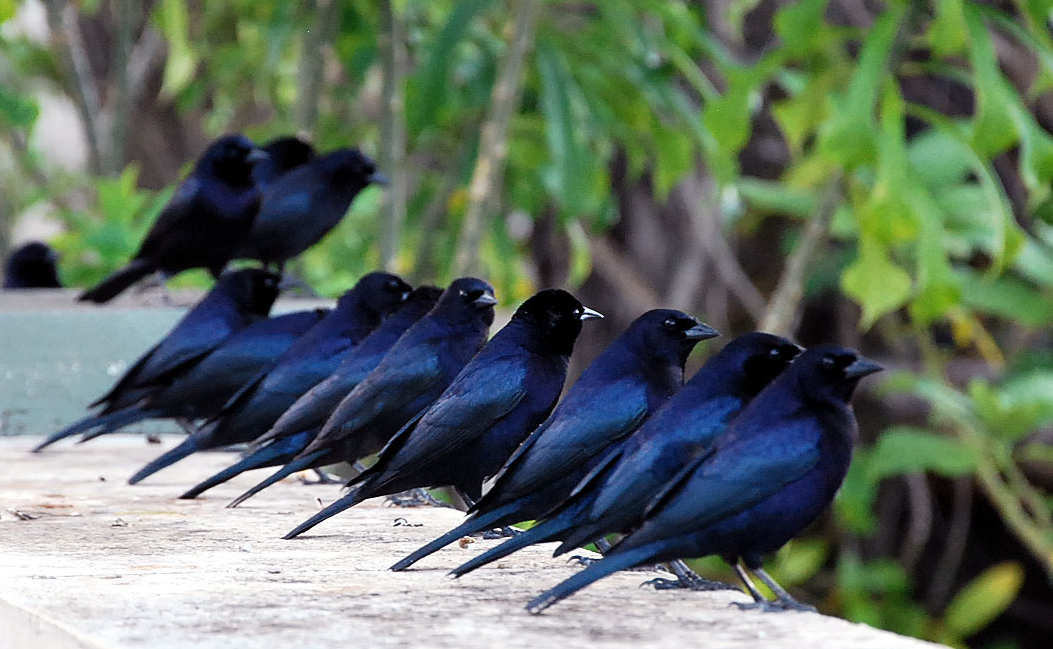逆來順受的鳥媽媽?非擬態鳥蛋存在時,褐黃沼澤雀會降低對擬態鳥蛋的接受度
 |
| 褐黃沼澤雀 (Pseudoleistes virescens) photo: PECHO AMARILLO Pseudoleistes virescens (wikimedia) |
標題:Brown-and-yellow marshbirds reduce their acceptance threshold of mimetic brood parasite eggs in the presence of non-mimetic eggs
摘要
The recognition and subsequent rejection of brood parasite eggs is one of the most commonly observed defensive behaviors of the host. The brown-and-yellow marshbird (Pseudoleistes virescens) is a common host of the shiny cowbird (Molothrus bonariensis). This host rec- ognizes and rejects immaculate white eggs of the cowbird, but accepts this bird’s spotted eggs. We assessed the acceptance threshold hypothesis which proposes that par- asite egg recognition is context-dependent. We experimentally parasitized host nests with a spotted cowbird egg and simultaneously added: (1) one novel egg with spots similar to those of a cowbird egg but on a blue background or (2) one immaculate white cowbird egg. In this setting, 78 % of the novel blue egg with spots and 77 % of the cowbird’s immaculate white eggs were quickly recognized and rejected. The rejection frequency of spotted cowbird eggs was also high (60 %) and was not related to the type of egg which had been added to the host nest together with the spotted cowbird egg. This rejection frequency of spotted cowbird eggs is higher than the 21 % that we previously found in a similar experimental setting but in which the spotted cowbird egg was added singly to the host nest. These results support the acceptance threshold hypothesis that predicts an adaptive modulation of the antiparasite defence when the perceived risk of parasitism is high.
鳥蛋寄生這個現象就是為了要把育幼的成本轉嫁到另一種鳥的身上,但是被寄生的那種鳥不會傻傻的養育不是自己的小鳥,也會想盡辦法把不屬於自己的小鳥排除,在演化上就形成十分劇烈的軍備競爭 (arm race)。但也奇怪的是,如果被寄生的鳥能有效的排除鳥蛋,這種寄生策略就難以形成,也就是還是有被寄生的鳥無法分辨外來的鳥蛋,是因為認知能力不足,鳥蛋擬態成功,或是有其他某些因素?
 |
| 紫輝牛鸝 (Molothrus bonariensis) photo: Shiny cowbird (wiki) |
紫輝牛鸝 (Molothrus bonariensis) 也是一種寄生鳥蛋的物種,寄生時可能把原寄主的鳥蛋破壞,而且在南美洲是一種入侵性物種,也有可能會破壞原生物種的鳥蛋。褐黃沼澤雀 (Pseudoleistes virescens)是紫輝牛鸝的常見寄主,這種鳥會把白色光滑的寄生鳥蛋排除,但對於與自身鳥蛋相似,有褐色點的鳥蛋接受度很高,作者群想瞭解這種鳥對於決定寄生鳥蛋的排除或不排除之間的決策,或是是否能夠辨識寄生鳥蛋差異的光譜中,是否存在著某種「開關」?
 |
| Fig. 1 實驗中所使用的鳥蛋樣式 a圖上排 純白鳥蛋 (white immaclate, CwI) 中排 藍色有點 (Novel Blue spots, NBS) 下排 自然有點 (cowbird eggs, CwS) |
 |
| Fig. 2 鳥蛋排除比例 |
作者群認為他們的結果顯示出鳥類在認知自身鳥蛋上的「閥值」,如果只有擬態型的鳥蛋,此時尚未達到閥值(開關還沒打開),因此褐黃沼澤雀能夠接受不是自己的鳥蛋,但如果把明顯不一樣的鳥蛋置入,此時達到認知閥值(開關打開),就能夠辨識所有不是自己的蛋並且將之排除。這可能也部分解釋為何有的鳥種為何能夠接受,或是無法辨識外來的寄生鳥蛋。





0 comments